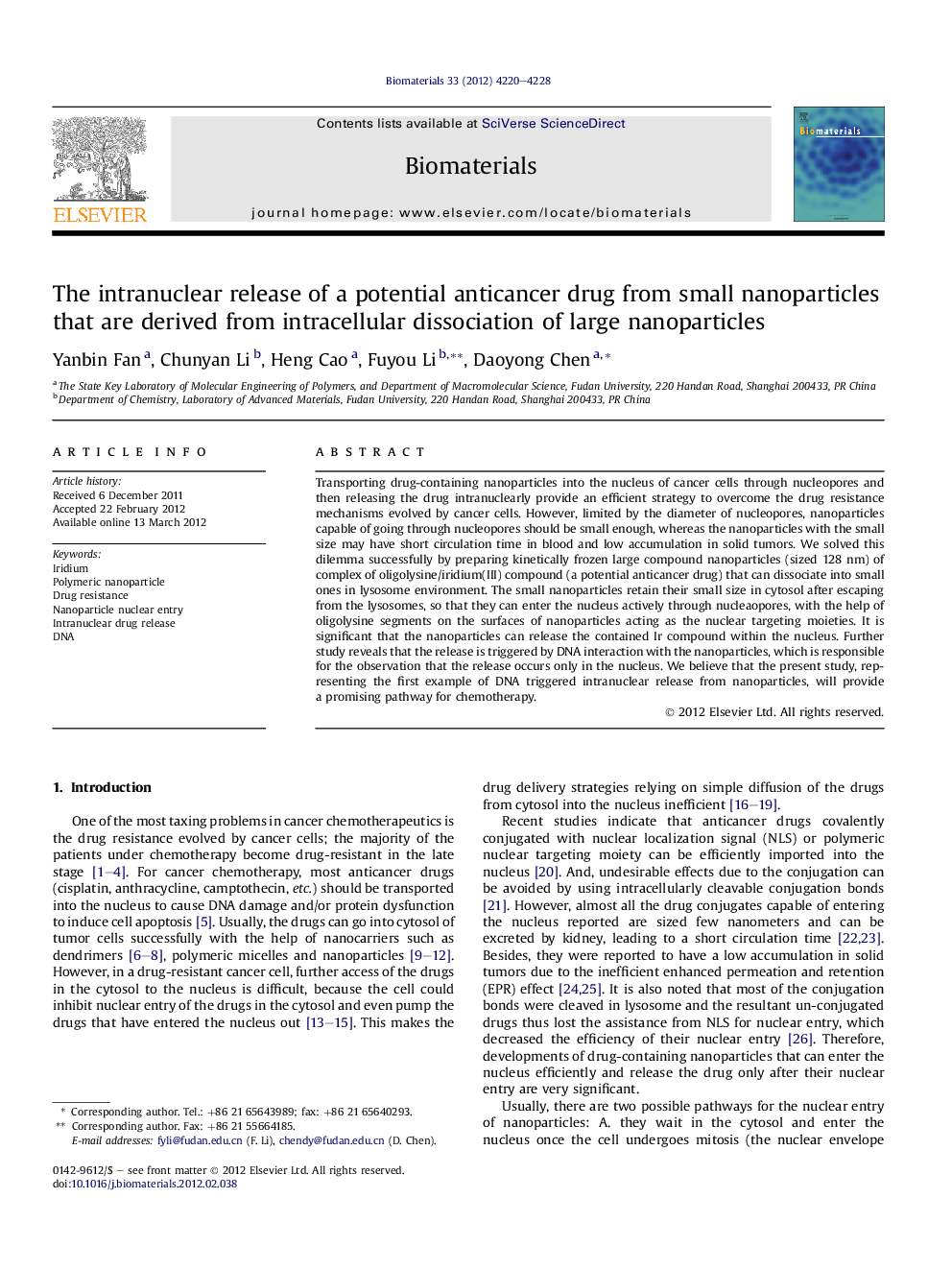| Article ID | Journal | Published Year | Pages | File Type |
|---|---|---|---|---|
| 7308 | Biomaterials | 2012 | 9 Pages |
Transporting drug-containing nanoparticles into the nucleus of cancer cells through nucleopores and then releasing the drug intranuclearly provide an efficient strategy to overcome the drug resistance mechanisms evolved by cancer cells. However, limited by the diameter of nucleopores, nanoparticles capable of going through nucleopores should be small enough, whereas the nanoparticles with the small size may have short circulation time in blood and low accumulation in solid tumors. We solved this dilemma successfully by preparing kinetically frozen large compound nanoparticles (sized 128 nm) of complex of oligolysine/iridium(III) compound (a potential anticancer drug) that can dissociate into small ones in lysosome environment. The small nanoparticles retain their small size in cytosol after escaping from the lysosomes, so that they can enter the nucleus actively through nucleaopores, with the help of oligolysine segments on the surfaces of nanoparticles acting as the nuclear targeting moieties. It is significant that the nanoparticles can release the contained Ir compound within the nucleus. Further study reveals that the release is triggered by DNA interaction with the nanoparticles, which is responsible for the observation that the release occurs only in the nucleus. We believe that the present study, representing the first example of DNA triggered intranuclear release from nanoparticles, will provide a promising pathway for chemotherapy.
